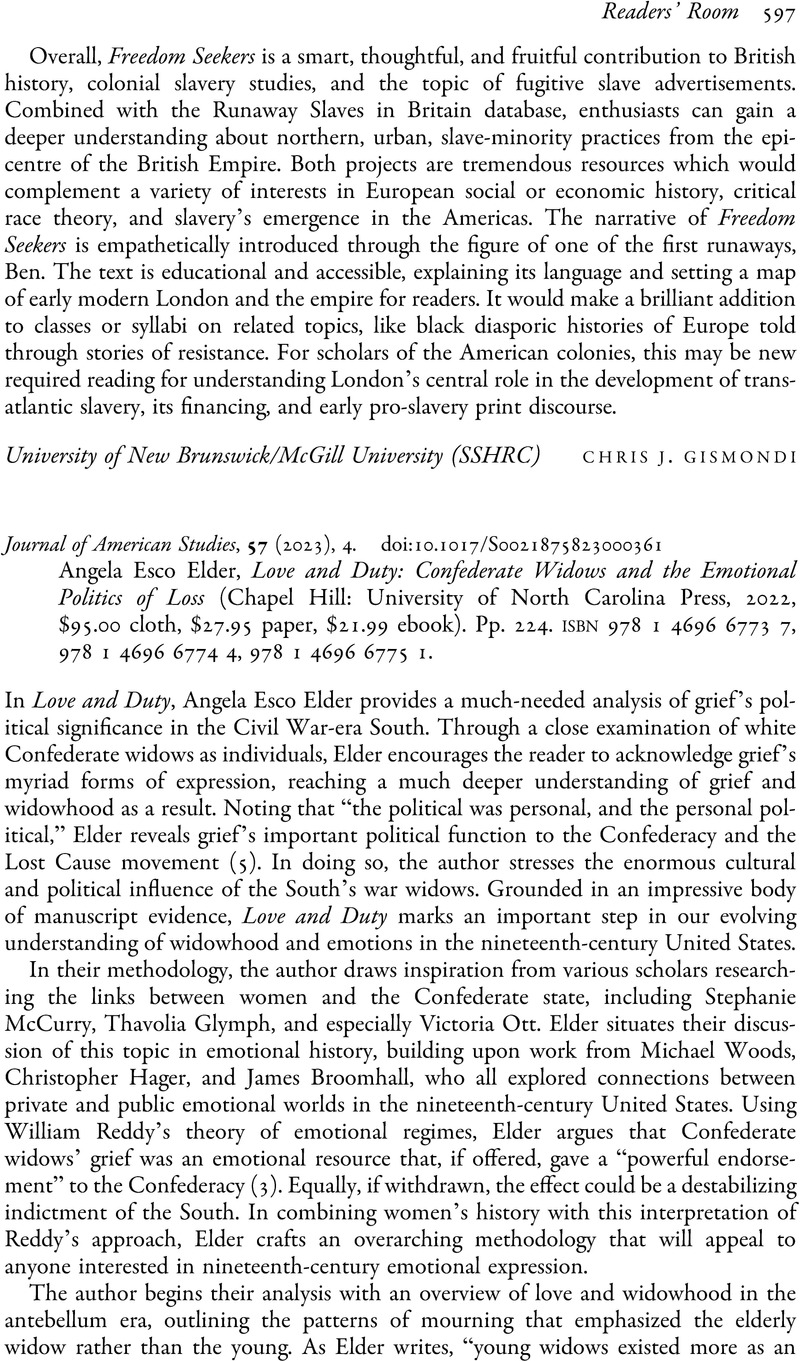No CrossRef data available.
Article contents
Angela Esco Elder, Love and Duty: Confederate Widows and the Emotional Politics of Loss (Chapel Hill: University of North Carolina Press, 2022, $95.00 cloth, $27.95 paper, $21.99 ebook). Pp. 224. isbn 978 1 4696 6773 7, 978 1 4696 6774 4, 978 1 4696 6775 1.
Review products
Angela Esco Elder, Love and Duty: Confederate Widows and the Emotional Politics of Loss (Chapel Hill: University of North Carolina Press, 2022, $95.00 cloth, $27.95 paper, $21.99 ebook). Pp. 224. isbn 978 1 4696 6773 7, 978 1 4696 6774 4, 978 1 4696 6775 1.
Published online by Cambridge University Press: 22 November 2023
Abstract
An abstract is not available for this content so a preview has been provided. Please use the Get access link above for information on how to access this content.

- Type
- Readers’ Room
- Information
- Copyright
- Copyright © The Author(s), 2023. Published by Cambridge University Press in association with the British Association for American Studies



